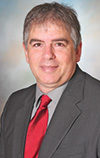Keeping every heifer as a replacement is not necessary to successfully manage herd turnover.
With the help of new genetic technologies, you can more confidently identify and more accurately select heifers with the greatest likelihood to survive and thrive. Genomic testing offers the opportunity to learn which calves have the genetic potential to advance your dairy and help meet your goals.
With a genomic test that includes wellness traits for diseases such as mastitis, lameness, metritis, ketosis, displaced abomasum, retained placenta and now milk fever (for Jerseys), you can predict and select animals less likely to fall ill with some of the costliest diseases. Predicting their disease potential, or lack thereof, increases their chances of advancing to the production prime of their careers, where you can maximize profit from them.
With accurate, reliable genomic information, you can select the heifers that will increase your chances of building a better herd for increased profitability. Here’s how:
1. Know how many replacement heifers are needed for the milking herd. Be sure to consider ideal turnover rates, culling and expansions for determining how many replacements will be needed to maintain a steady flow of milk in the tank.
2. Identify heifers with the desired genetic makeup to thrive in your milking herd. Think about the long term – not only regarding production but also in terms of health and livability.
3. Invest in calving in only those heifers that meet your goals. Which heifers have the potential to stay in your herd for the long term? Knowing this will help you better manage herd turnover and keep more of the older, high-producing cows in the herd.
4. Have a plan for the heifers you don’t need. Once you implement a culling strategy using genomic information to help eliminate animals with low chances of being profitable, breeding some cows with beef bulls can create an increased revenue stream. However, it is critical to incorporate beef, sexed and conventional dairy semen appropriately to obtain the correct number of heifers.
What’s the bottom line to right-sizing heifer inventory?
Heifer rearing is often the second- or third-largest expense on a dairy, costing up to $2,200 to raise a heifer from birth to springing. Remember, a common-sense rule to follow is: A cow doesn’t cover its up-front costs until midway through the second lactation. High input costs mean you must invest a significant amount of capital long before that heifer starts making money.
Milking too many first-lactation animals can decrease the average production of the herd, reduce parlor efficiency and take away your profit. Calving in surplus heifers can push out cows in the prime of their career when an animal has “paid her bills.” Once a cow reaches that point, every pound of milk made above feed costs is money in the bank.
Managing herd turnover costs to be as low as possible can increase profitability, according to a study by Zoetis and Compeer Financial.
The study collected and analyzed 11 years of herd data from 489 year-end financial and production-record summaries with an average herd size of 1,087 cows and identified net herd turnover cost as a key dairy financial driver (Table 1).

When sorted for net herd turnover cost, the difference in production between the top third and bottom third of herds in the study was 12 pounds of milk per cow per day, adding up to $376 per cow per year in net farm income. Additionally, the bottom herds in the study had actual net herd turnover costs double those of the top herds – $1.99 and 91 cents, respectively.
While you need to have replacement heifers, it should not be at the expense of older milking cows. That leads to lower milk production and decreased profitability. A first-lactation animal makes 15 percent less than a second-lactation cow – and 25 percent less than cows in their third or fourth lactation. Older cows can actually make more money for you given they produce more milk than a first-lactation animal and have been in your herd long enough to cover up-front expenses.
To balance your net herd turnover cost, set long-term goals to reduce culling levels closer to the 25 to 30 percent range to maximize profitability. This will allow you to maintain a fresh source of animals with high genetic potential while still allowing cows to reach lifetime production peaks.
By keeping those older, peak-productivity cows in the herd, you reduce the significant expenses of raising heifers to breeding age and beyond. In turn, profit is optimized without having to invest in more heifers than you need.
Ultimately, improving overall profitability on your dairy comes down to one thing: keeping only the heifers you need and strategically aligning your heifer-raising strategy. ![]()
References omitted but are available upon request. Click here to email an editor.





